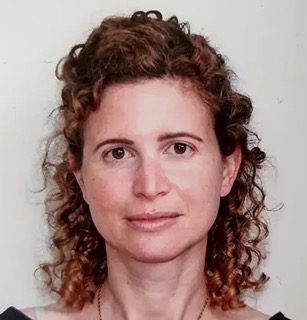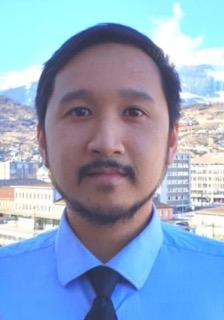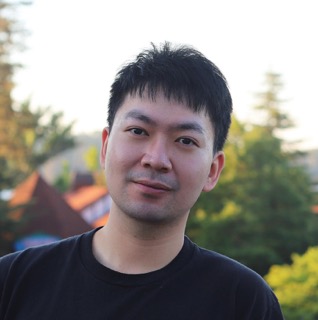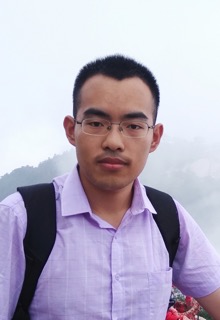All times below are in Pacific Time (GMT -7).
Thursday, August 15: Plenary Session
8:30 AM
Welcome
Beihang Yu, Chair of the User Executive Committee
Jeffrey Neaton, Associate Laboratory Director for the Energy Sciences Area
Branden Brough, Director of the National Nanotechnology Coordination Office
Andy Minor, Interim Director of the Molecular Foundry
9:20 AM
User Highlight

Electrochemical Doping of Organic Mixed Ionic-Electronic Conductors: A Microstructural Cryogenic 4D-STEM Study
Yael Tsarfati
, Stanford University
Organic mixed ionic-electronic conductors (OMIECs) are semiconducting polymers that efficiently transport both ionic and electronic charges. This mixed transport makes OMIECs promising materials for a wide range of fields including energy storage and bioelectronics. To enhance the efficiency and stability of OMIECs films in devices, typically organic electrochemical transistors (OECTs), a deeper understanding of their structural characteristics and evolution under operational conditions is essential. A significant challenge is obtaining local information with high spatial resolution across extensive areas of polymer films to identify and map structural heterogeneities at the mesoscale. In this study, we address this challenge by developing a methodology to prepare TEM samples of active OMIECs films – swollen in aqueous electrolyte and electrochemically doped – for characterization using cryogenic 4D-STEM. In this talk I will describe our approach, the identified structural transitions following hydration and charging of a model OMIEC, and how these changes relate to the OMIEC’s properties.
This study can provide the desired local perspective and extend beyond OMIECs and conjugated polymers, facilitating the fundamental exploration of how order evolves under bias in functional materials and how these modifications affect their properties.
9:45 AM
User Highlight

Precision Separation of Critical Metals
Daniel Sun
, Sunchem
Critical metals of environmental and economic relevance can be found within complex mixtures, such as mine tailings, electronic waste and wastewater, at trace amounts. Specifically, gold is a critical metal that carries desired redox active properties in various applications, including modern electronics, medicine and chemical catalysis. In 2018, we reported the remarkable selectivity and capacity of metal-organic framework/polymer composites for extraction of various metals in extremely dilute concentrations.[1,2] This talk will predominantly focus on one example, Fe-BTC/PpPDA, which can selectively extract and concentrate gold from complex water mixtures.[3] Overcoming engineering challenges related to technology scale-up, we most recently reported the structuring of sub-micron Fe-BTC/PpPDA crystallites into larger 250 μm or 500 μm granules for continuous packed bed experiments for the precision separation of gold. The Structured Fe-BTC/PpPDA is highly crystalline and porous with a BET surface area of 750 m2 g-1 and this hybrid nanocomposite material maintains its selectivity for gold ions over common inorganic interferents. The structuring approach reported prevents excessive pressure drop and ensures stability over time and operation in a packed bed column. Further, we demonstrate that the Structured Fe-BTC/PpPDA can concentrate at least 42 wt. % of gold under a dynamic continuous flow operation.[4] These findings highlight the potential of Structured Fe-BTC/PpPDA for practical applications in industry, particularly in the selective capture of gold from complex mixtures.
10:10 AM
25-minute break
10:35 AM
New Foundry Capabilities
Katherine Sytwu , University of Nottingham
Alexander Stibor, Berkeley Lab
11:00 AM
Keynote

Atomristors: Single-Atom Memristors and Low-Energy Electronic Systems
Deji Akinwande
, The University of Texas at Austin
This presentation focuses on the discovery of memory effect in 2D atomically-thin nanomaterials towards greater scientific understanding and advanced engineering applications. Non-volatile resistance switching memory devices based on 2D materials are an application of defects and is a rapidly advancing field with rich physics that can be attributed to vacancies combined with metal adsorption. In particular, the talk will highlight our pioneering work on monolayer memory (atomristors) that has expanded to over a dozen 2D sheets and can enable various applications including zero-power devices, non-volatile RF switches, and memristors for neuromorphic computing. These memory devices offer high-energy efficiency and fast switching that may benefit mobile systems, cloud computing and data centers towards reduced energy consumption worldwide. Ultimately, there is increasing opportunity for understanding ion-electrodynamics at atomic interfaces.
Friday, August 16: Plenary Session
8:30 AM
User Town Hall
9:25 AM
Keynote Address

Digital Microfluidics for Chemistry, Biology, and Medicine
Aaron Wheeler
, University of Toronto
Microfluidics is the study and application of fluid flow in microfabricated devices bearing length dimensions in the micrometer range (10-6 m, about the size of a human hair). This technology is revolutionizing the way we live, work, and interact, and in this presentation, I will describe microfluidic tools that my research group has developed to address problems in chemistry, biology, and medicine. For chemistry, I will discuss our on-going work to initiate and evaluate chemical reactions and to screen for environmental perturbations within the tiny bores of super-conducting magnets in nuclear magnetic resonance spectrometers. For biology, I will review our methods for isolating single cells to be able to profile their genomes, transcriptomes, and proteomes. For medicine, I will summarize our work developing point of care diagnostic devices that can be operated in remote settings for serological surveillance of immune status. I will conclude with predictions about what the future may hold for this promising technology.
10:15 AM
25-minute break
10:40 AM
IDEA Plenary

It’s About Relationship Building: Leveraging DEIA Strategies in Research
Lynn Villafuerte
, Office of Energy Justice and Equity, U.S. Department of Energy
Integral to research are collaborative teams. From building the research group to communicating results, diversity, equity, inclusion, and accessibility (DEIA) should be integrated. The Department of Energy’s Office of DEIA at the Office Energy Justice and Equity (EJE) various external and internal workforce engagement strategies are impactful investments in building research teams and supporting inclusive and productive research environments.
11:10 AM
Postdoc Paper Award Winner

Heat-resistant polysulfates as emerging dielectric materials for energy storage
He Li
, Applied Materials, Inc.
Polymer dielectrics with high energy densities and efficiencies are critical components in microelectronics and power systems. However, designing heat-resistance polymer dielectrics that can reliably withstand the demanding temperatures for applications such as electric vehicles (140-150 °C) is a significant challenge, requiring materials capable of being electrically insulating, mechanically flexible, and thermally stable. In this presentation, I will discuss that polysulfates, synthesized via sulfur(VI) fluoride exchange (SuFEx) catalysis, another near-perfect click chemistry reaction, serve as heat-resistant dielectric polymers with outstanding energy storage capabilities at fierce temperatures and electric fields. The fluorene core-based polysulfate P3, in particular, balances key parameters regarding electronic, electrical, and thermal properties, displaying a wide bandgap of 3.9 eV, a high glass transition temperature (Tg) of 225 C, and a relatively high dielectric constant with ultra-low dielectric loss (e.g., 3.4 and <0.002 at 10 kHz). At 150 °C, the capacitor devices exhibit a high breakdown strength of 604 MV/m and a large discharged energy density of 6 J/cm3, far exceeding commercial benchmark high-Tg capacitor polymers, including polyimides (Upilex-S PI and Kapton PI), poly(ether ether ketone) (PEEK), poly(ethylene naphthalate) (PEN), fluorene polyester (FPE), and polyetherimide (PEI). The dielectric energy storage performance is further enhanced when ultrathin (~5 nm) oxide coatings are deposited by atomic layer deposition. The corresponding electrostatic film capacitors display high breakdown strength (>700 MV/m) and discharged energy density of 8.64 J/cm3 at 150 °C. The material chemistry of polysulfates accommodates desired structural diversity and scalability, which offers a viable path to dielectric polymers with higher energy density and thermal stability.
11:35 AM
Student Paper Award Winner

Microscopy and Spectro-microscopy of solid-liquid interface: beyond morphology
Xiao Zhao
, Stanford University
The nanoscale properties and dynamical processes of materials at solid-liquid interfaces play a critical role in natural phenomena and in industrial applications, including catalysis, energy storage, and in biology phenomena in membranes, protein self-assembly and many others. Over the past twenty years techniques based on Atomic Force Microscopy (AFM) have been widely used to obtain morphological information at the nanometer scale. However, methods that provide chemical and electronic information, like vibration and electronic structure are still scarce. Here I will present a novel platform that makes possible to obtain chemical and structural information of solid-liquid interfaces at the nanoscale level. This platform combines a graphene-capped cell containing the material under study, in gas or in liquid environments, with Kelvin Probe Force Microscopy (KPFM), and Fourier Transform Infrared Nanospectroscopy (nano-FTIR). With it we investigated the nanoscale structural evolution of protein assemblies in a controlled bio-environment. The protein substructure and ordering, and ion aggregation at interfaces are monitored by their characteristic IR vibrational bands and by the change in their contact potential. We also investigated the structure and interaction between electrodes and electrolytes at interfaces. Our platform opens broad opportunities for operando chemical imaging of soft materials or nanostructures (membrane protein, virus and nanoparticle) in their realistic condition and under external stimuli.
